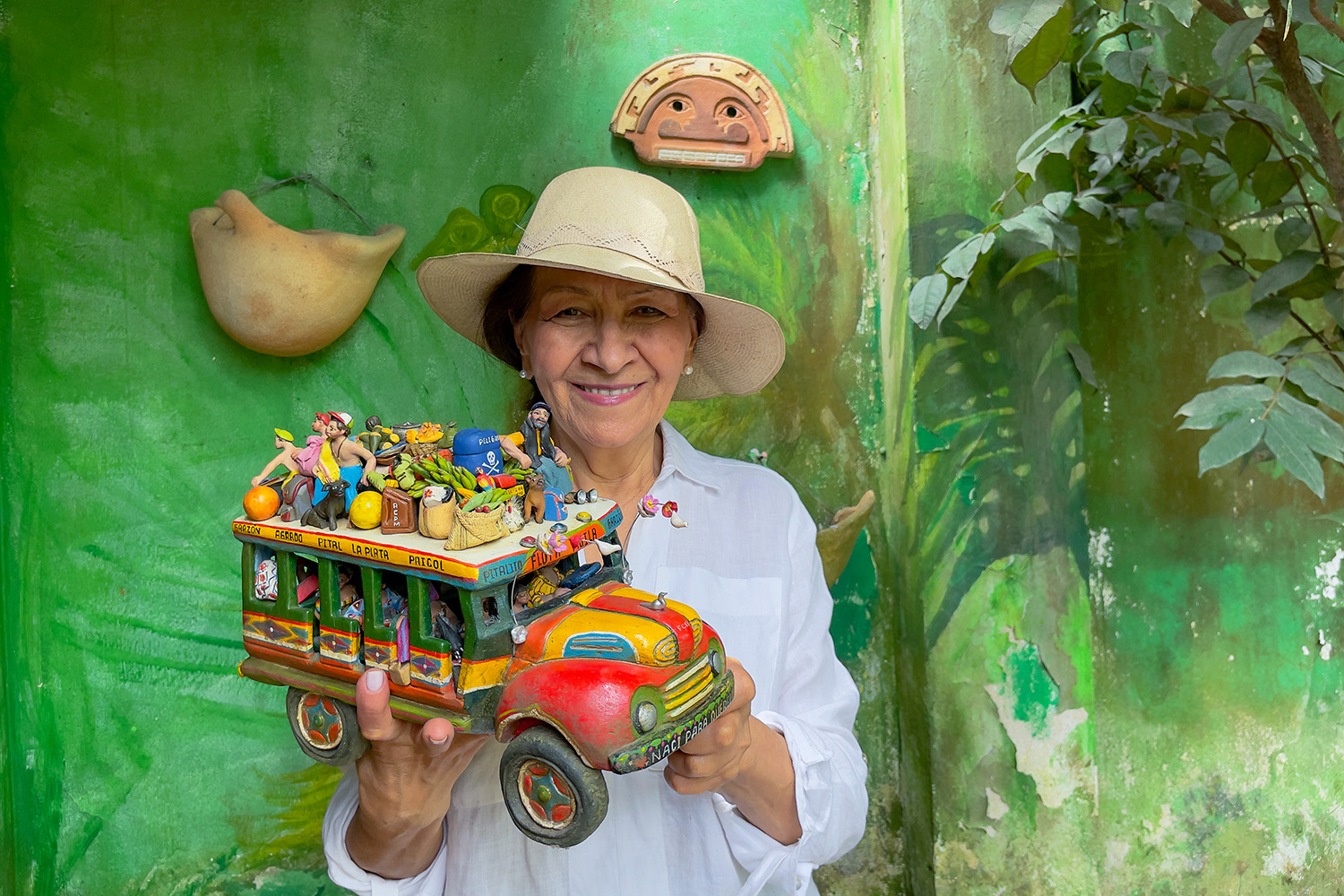
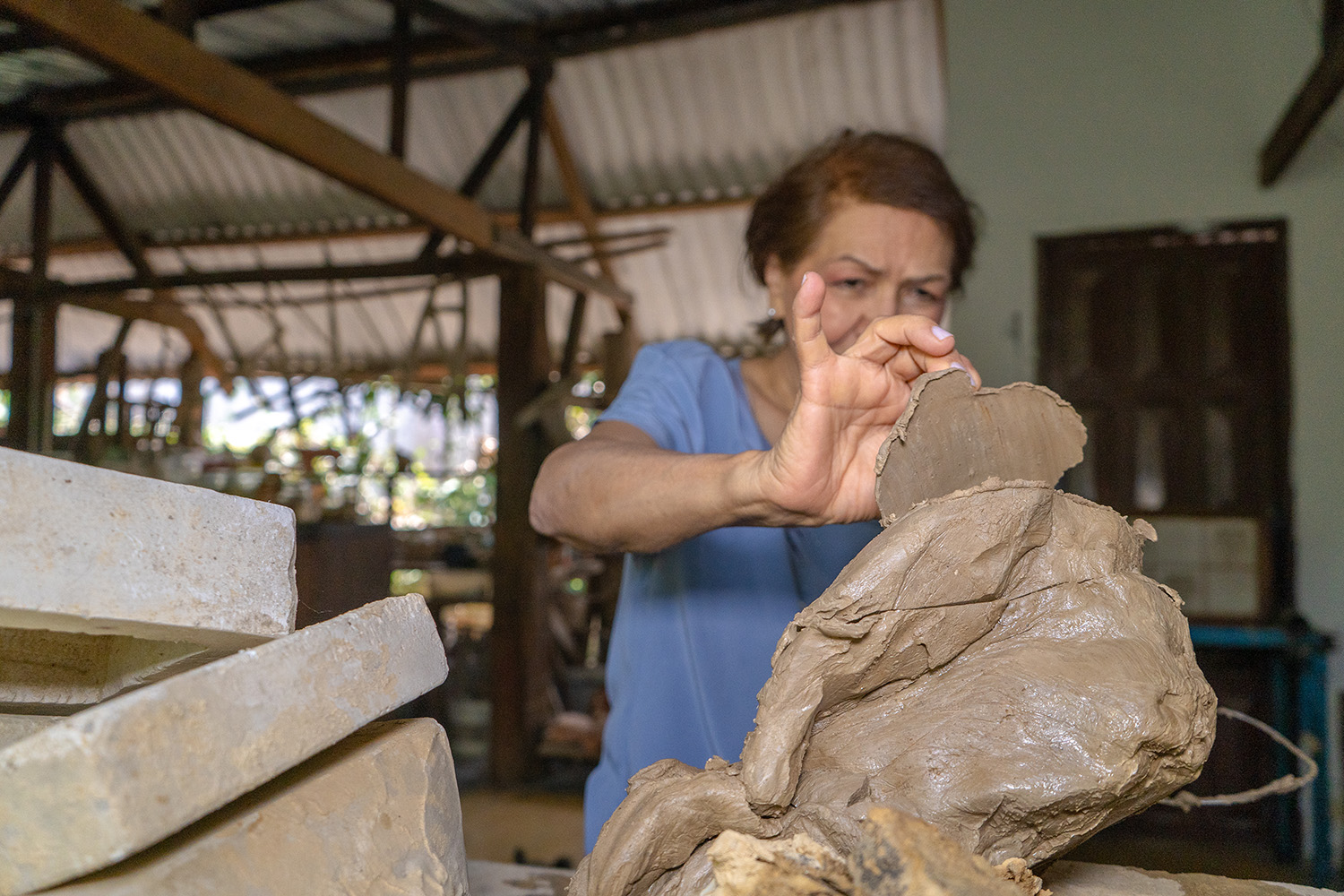
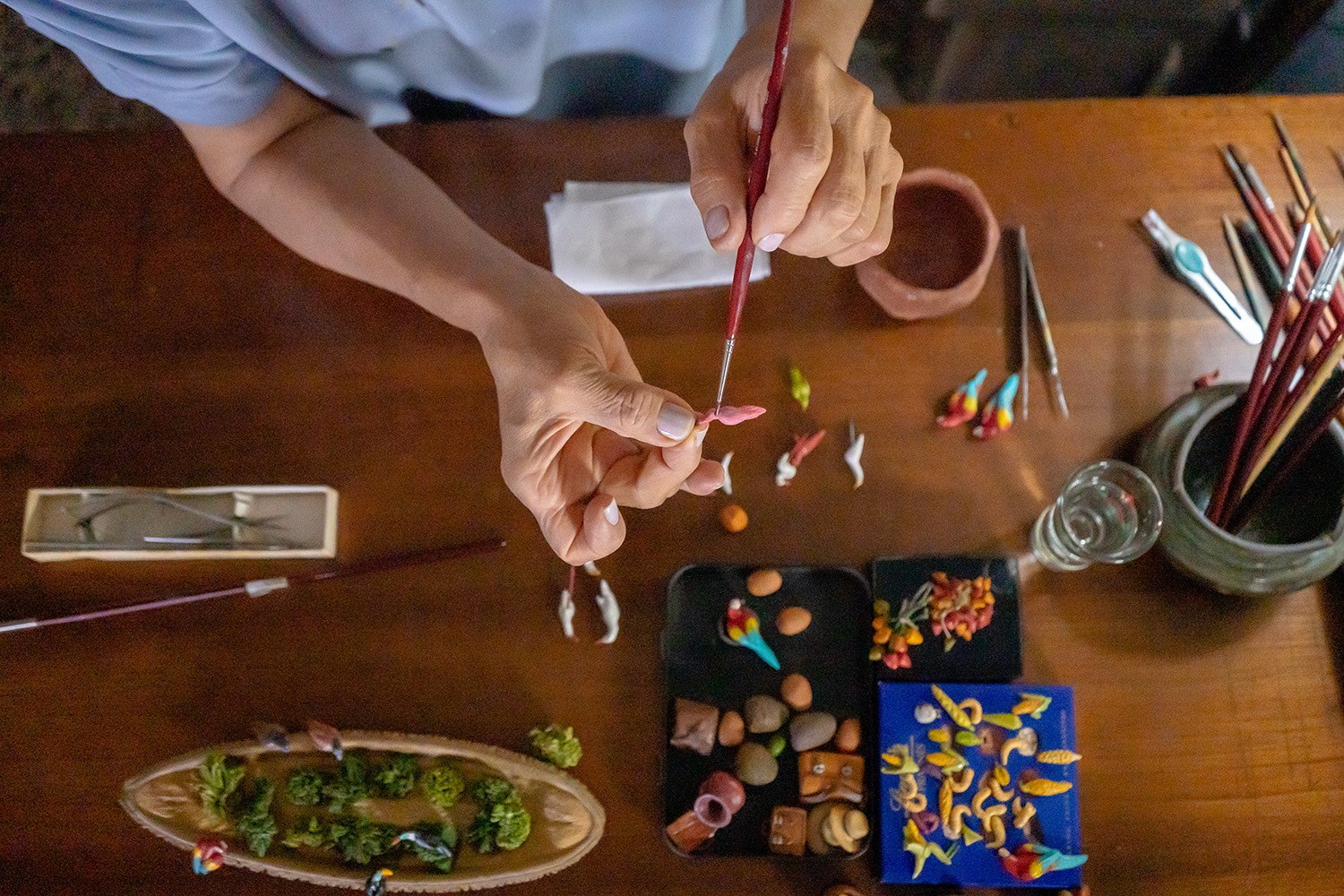
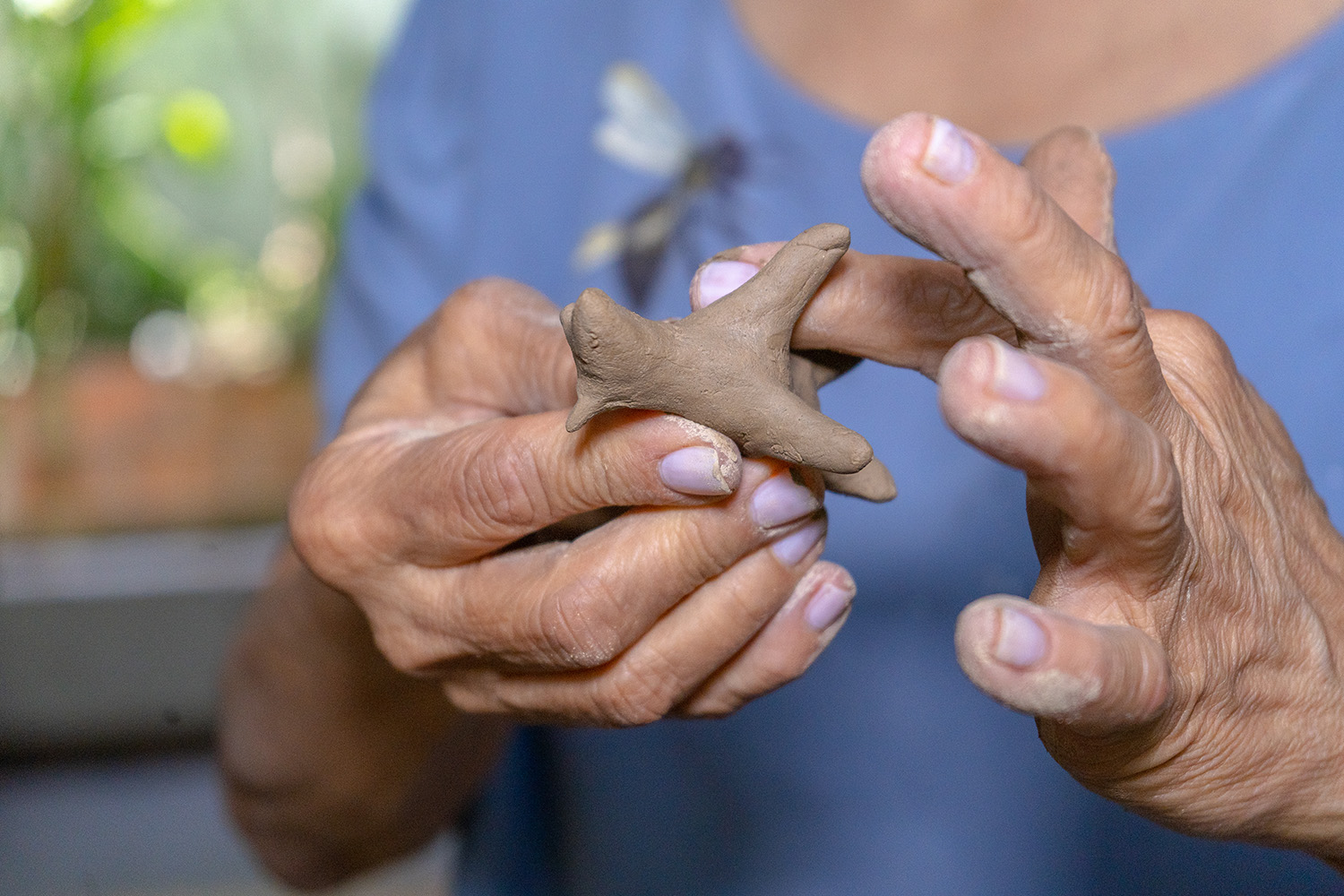
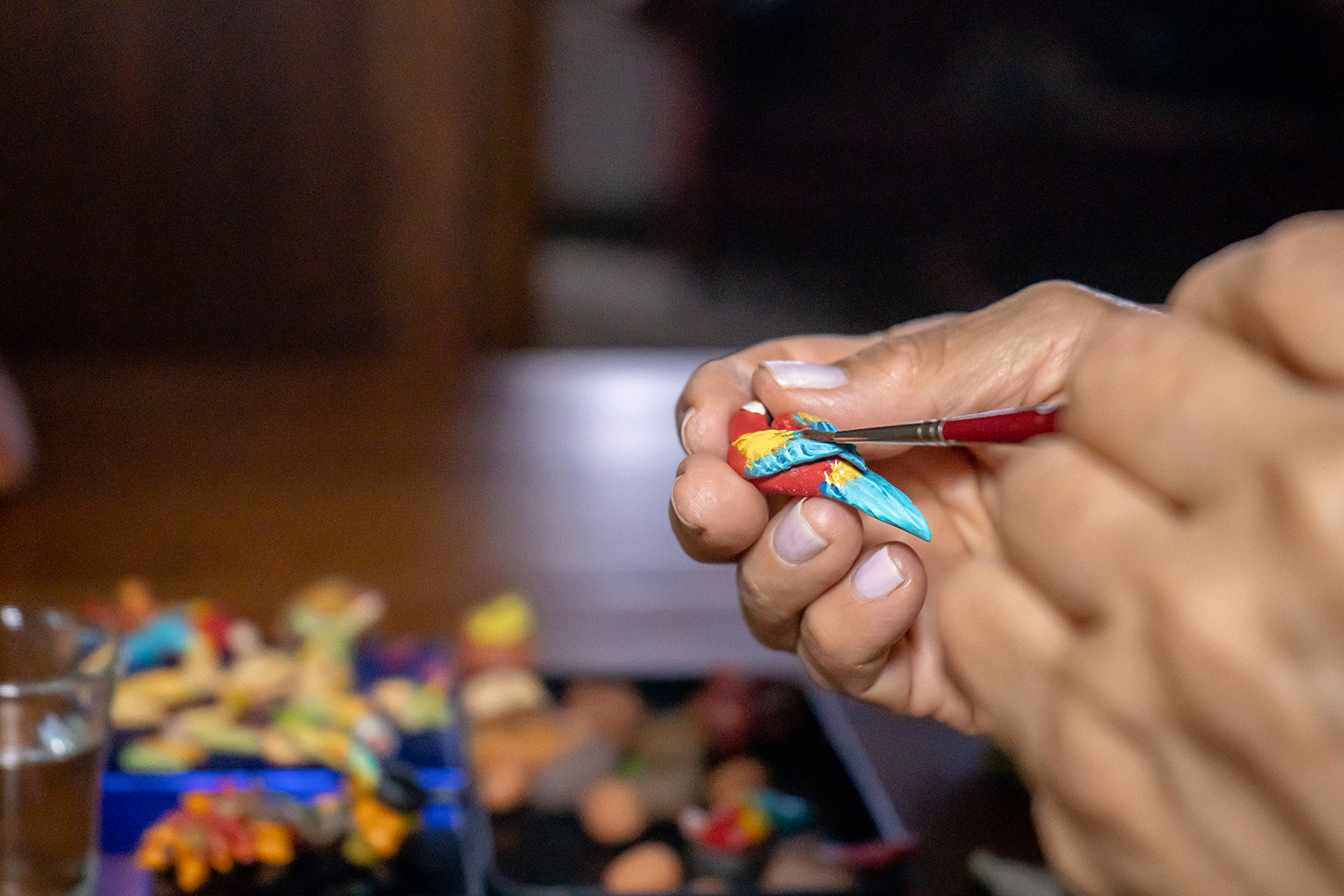





“Knowledge is not only acquired through academic studies, but throughout life,” is a sentence that Cecilia Vargas once read and that impacted her greatly. Ever since, she has identified with it. Cecilia carries forward a legacy and tradition inherited from her mother, but over time she has evolved her own, special language. Cecilia has devoted her entire life to investigating the different stories, groups, and cultures that make up the diverse Colombian culture. This has led her to the creation of spectacular works that reflect the innate curiosity that characterises her. Cecilia prefers not to be classified as a certain type of person or artisan, as she believes in living in a constant dialogue with herself, what she knows, and what she can learn about her environment and the world.
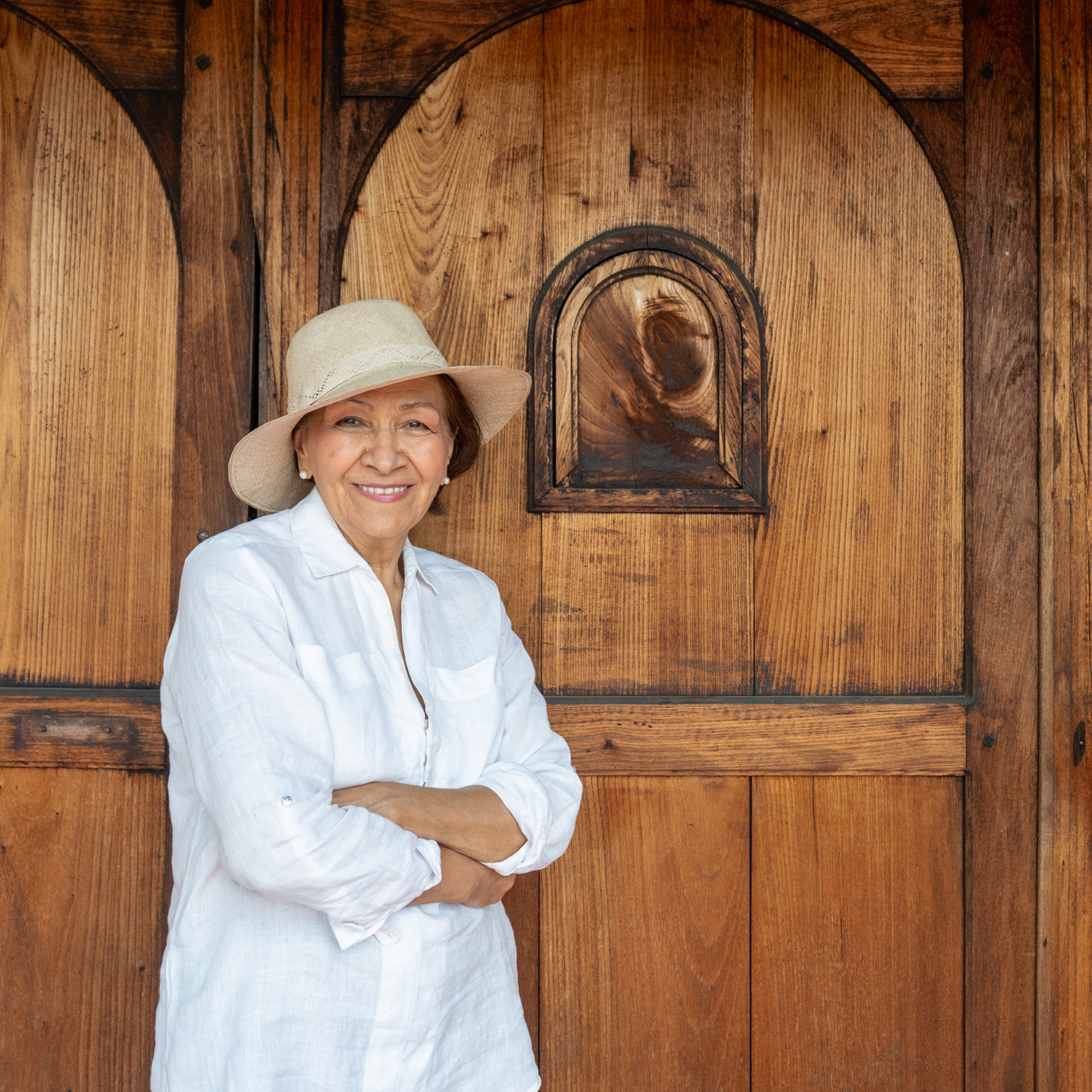
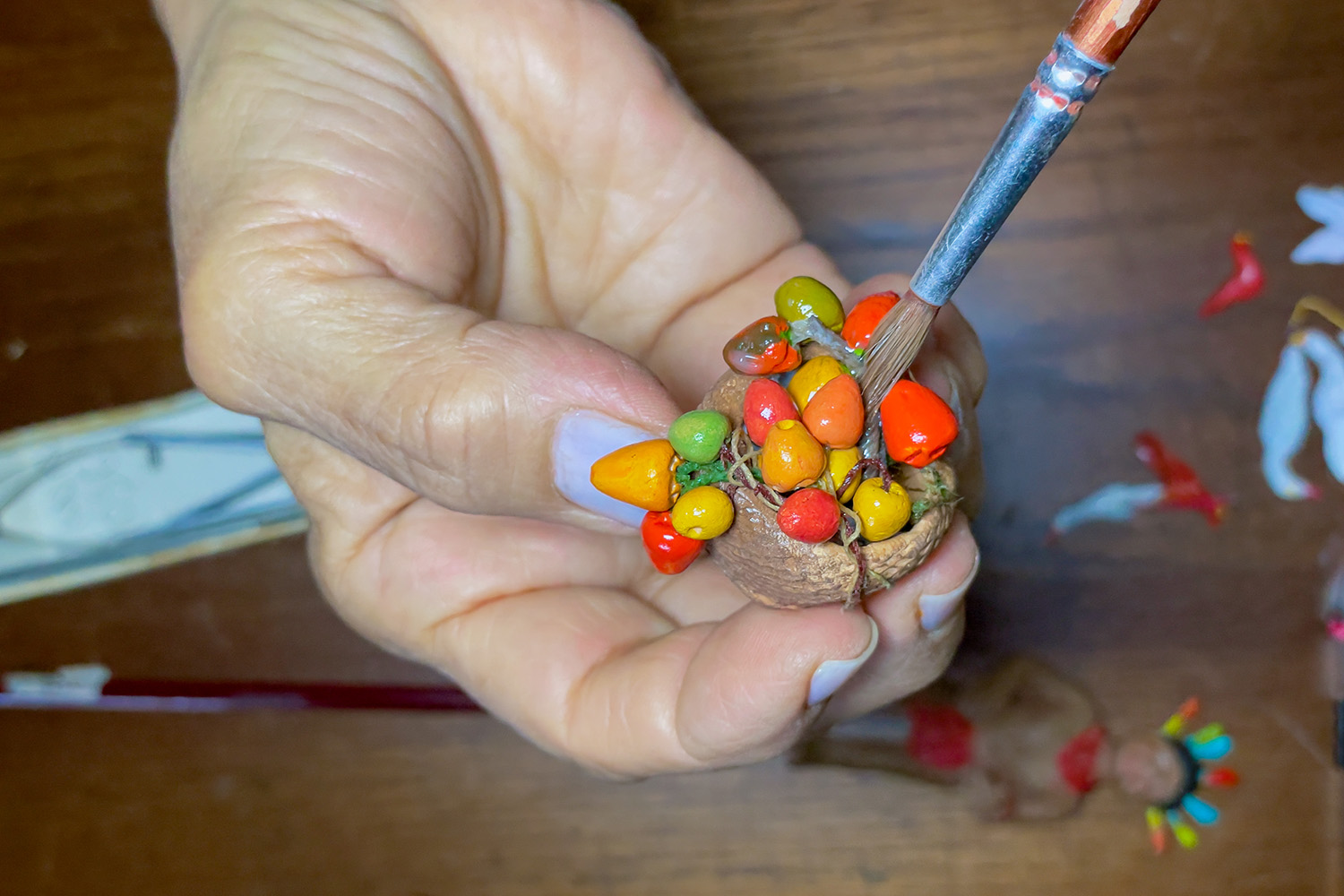
Cecilia Vargas